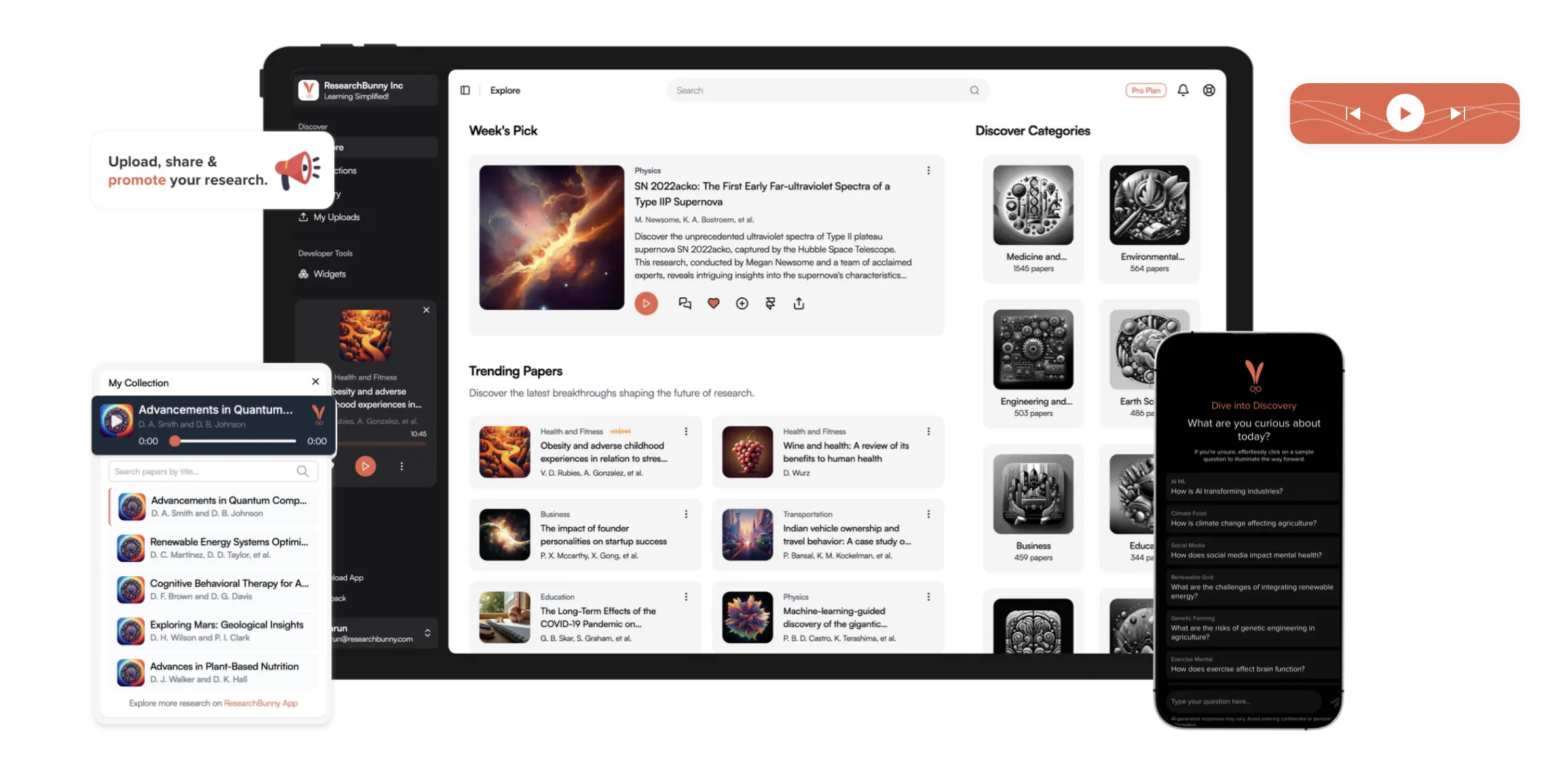
Table of Contents
Overview
Drowning in dense academic papers? Wish you could absorb research insights on the go? Enter ResearchBunny V1, an innovative AI-powered platform designed to transform complex scholarly articles into easily digestible audio summaries. This tool isn’t just about listening; it’s about engaging with research in a whole new way, making academic content more accessible and promoting wider research visibility. Let’s dive into what makes ResearchBunny a game-changer.
Key Features
- Multilingual Audio Summaries: Break down language barriers and access research in your preferred language with AI-powered audio summaries.
- AI-Curated Playlists: Discover related research and personalize your learning experience with AI-generated playlists based on your interests.
- Ask Bunny Q&A Feature: Get instant answers to your specific questions about the research paper through an interactive AI-powered Q&A system.
- Embeddable Audio Widgets: Easily share and promote your research by embedding audio summaries directly onto websites and blogs.
- Mobile Apps for iOS and Android: Learn on the go with dedicated mobile apps, allowing you to access summaries and playlists anytime, anywhere.
How It Works
ResearchBunny simplifies the process of understanding academic papers. Users begin by uploading an academic paper to the platform. The AI then analyzes the document and converts it into a concise audio summary. This summary is accessible through both the web platform and dedicated mobile apps. To further enhance the learning experience, ResearchBunny personalizes content through AI-generated playlists of related research. Finally, the “Ask Bunny” feature allows users to ask specific questions about the paper and receive instant, AI-powered answers.
Use Cases
ResearchBunny offers a wide range of applications for various users:
- Students and Researchers Accessing Dense Content: Quickly grasp the key findings of complex academic papers, saving valuable time and effort.
- Academics Promoting Research: Increase the reach and impact of their work by making it more accessible to a wider audience through audio summaries and embeddable widgets.
- Institutions Offering Learning Tools: Enhance their educational resources by providing students with an innovative and engaging way to learn.
- Lifelong Learners Staying Updated: Keep abreast of the latest research in their fields of interest without having to wade through lengthy and technical documents.
Pros & Cons
Like any tool, ResearchBunny has its strengths and weaknesses. Here’s a breakdown:
Advantages
- Enhances Accessibility: Makes complex academic research accessible to a wider audience through audio summaries.
- Personalized Learning: Offers a tailored learning experience through AI-curated playlists and the “Ask Bunny” Q&A feature.
- Supports Research Dissemination: Facilitates the sharing and promotion of research through embeddable audio widgets.
Disadvantages
- Summarization Limits for Technical Content: The AI’s summarization capabilities may be limited when dealing with highly technical or specialized content.
- Relies on AI Accuracy: The accuracy of the summaries and Q&A responses depends on the performance of the AI algorithms.
How Does It Compare?
While other tools offer similar features, ResearchBunny distinguishes itself with its unique combination of audio summaries, interactive features, and promotional tools. For example, Audemic offers audio summaries but lacks the interactive “Ask Bunny” feature. Scholarcy provides summaries but doesn’t offer audio versions or personalized playlists. ResearchBunny’s comprehensive approach sets it apart from the competition.
Final Thoughts
ResearchBunny V1 is a promising AI-powered platform that has the potential to revolutionize the way we engage with academic research. Its focus on accessibility, personalization, and research dissemination makes it a valuable tool for students, researchers, academics, and lifelong learners alike. While there are some limitations to consider, the benefits of ResearchBunny far outweigh the drawbacks, making it a worthy addition to any research toolkit.

